Since each person is unique, our passions are not the same. Some like to hike, others like to run marathon series at home on weekends. For you and me, it’s sim-racing. This discipline is more or less young, if you consider that the ones I’ve just presented are a little dated. But then, twenty years isn’t so bad, is it?
So, sim-racing is a discipline that emerged towards the end of the 90s with players such as Thrustmaster, Fanatec, Playseat and Logitech. In fact, Logitech was around long before the others, but began devoting itself to sim-racing during the same period. Of course, every racer has his or her own set-up for sim-racing. We have the standard setups with steering wheel, base and pedals, which make up a large part of the worldwide pool of configurations. In this segment, Logitech and Thrustmaster have dominated the game for a very long time, and have even made this their main focus with their rather mid-range products. The high-end segment, on the other hand, is mainly represented by the Fanatec brands, for the general public, and Simucube for everything professional.
Of course, as you can probably imagine, standard configurations quickly show their limits in terms of immersion, and we have racers who want to push realism even further. This is achieved by adding peripherals to the configs, such as a curved screen, shifter, handbrake and above all a cockpit.
In what follows, I’m going to introduce you to the best cockpits available on the market for sim-racing. This list will include 4 chassis, with different price ranges for each product, in order to satisfy as many racers as possible.
The Simlab GT1 Evo
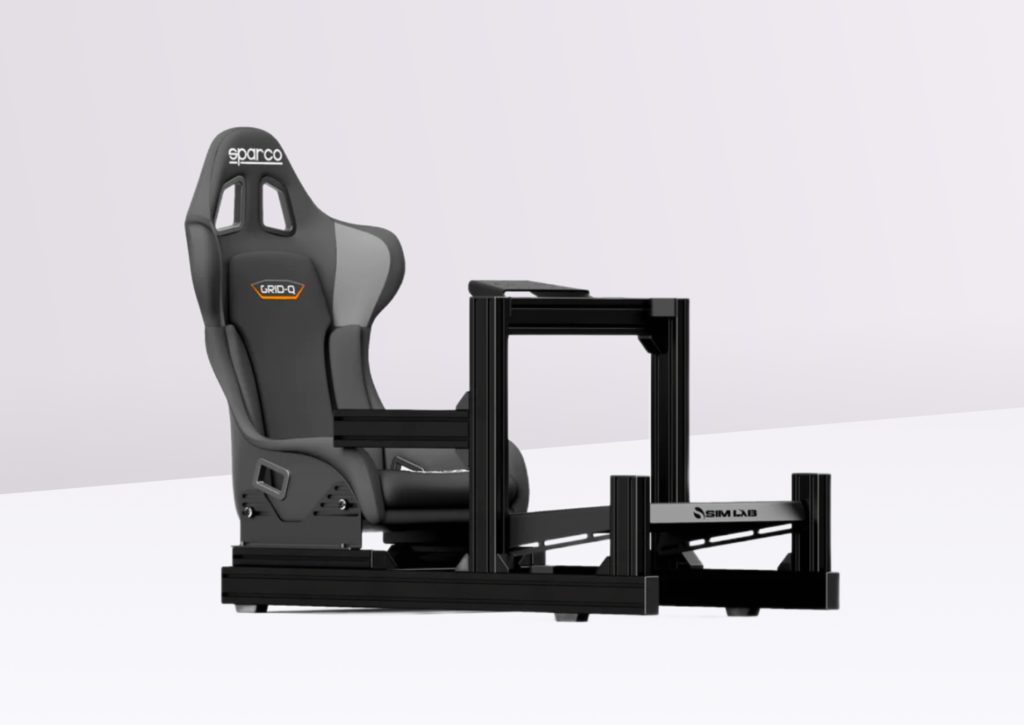
Advantages :
- Sturdy, stable structure
- Withstands high forces (up to 25 nm)
- Advanced customization with a wide range of options
- Elegant black aluminum design
Disadvantages :
- Limited accessory catalog
Dutch brand Simlab has been active in the sim-racing industry for some ten years, mainly in the cockpit segment. In addition, Simlab is the official partner of AMG Petronas in the world of motor racing, notably in F1.
In addition to chassis, Simlab also offers sim-racing accessories, such as steering wheels, hubs, pedals, handbrake, dashboards, which are taken directly from Grid Engineering, as well as other products. Simlab’s accessory catalog is brand new for the brand, as well as being meagre, which doesn’t really help matters. Nevertheless, where this Dutch company shines is in sim-racing chassis.
With only 4 entries in its cockpit catalog, Simlab pales in comparison to brands such as Playseat. However, Simlab’s big advantage lies in the modularity of its solutions. All Simlab chassis are fully customizable, like the GT1 Evo for example.
This cockpit is Simlab’s bottom-of-the-range model, with a retail price of just over €445 for the bare-bones version. The GT1 Evo features an all-black aluminum profile structure, which not only looks great, but is also exceptionally rigid. The Direct Drive base support is designed to take a Podium DD2 and its 25 nm of torque. The same goes for the bottom bracket plate, which can withstand a braking force in excess of 100 kg.
The GT1 Evo is configurable to your preferences, with options for bucket seats, slides, monitor mounts and more. It’s a must-have sim-racing chassis at a very affordable price. What’s more, this cockpit is configurable, allowing you to add accessories to suit your needs.
The Fanatec CSL Cockpit
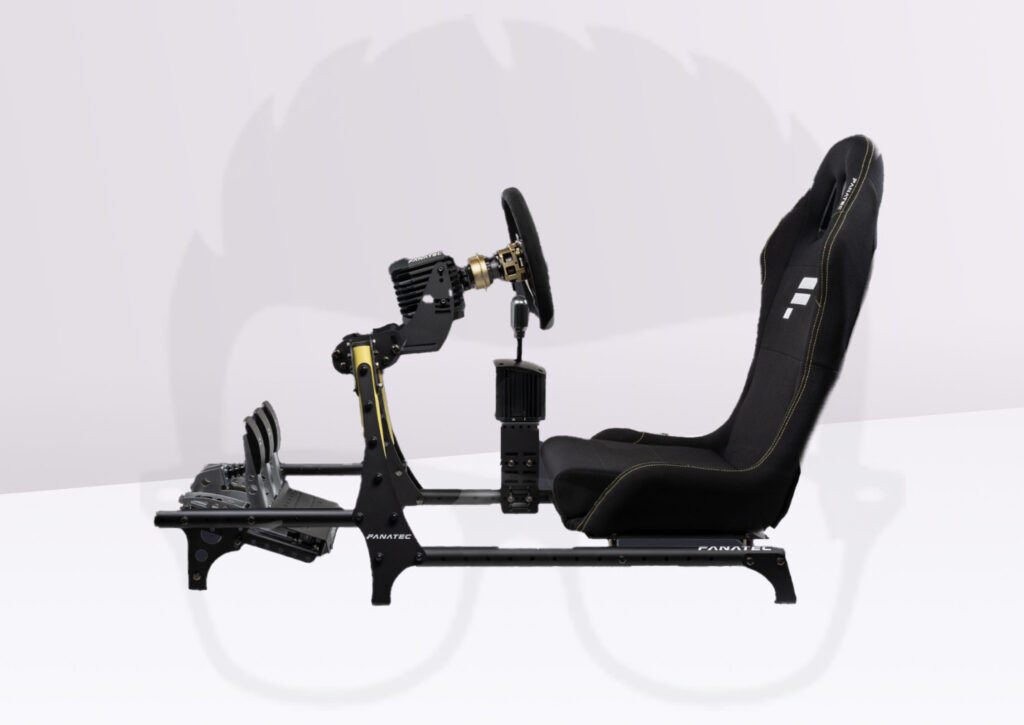
Advantages :
- Robust tubular design
- Compatible with all Fanatec products
- Competitive prices
Disadvantages :
- Seat and other supports sold separately
- Seat without slide, requiring wrenches for adjustment
It’s news time at Fanatec, much to the delight of sim-raceurs of course. After launching with great fanfare the new Quick Release QR2 Base and Wheel side, whose design has evolved considerably from the previous one, and the new mid-range Direct Drive bases developing 12 and 15 nm of constant torque, Fanatec has set itself the goal of offering a complete ecosystem for sim-racing.
Connoisseurs of the discipline know that Fanatec sells sim-racing peripherals for every racer in the world. Its catalog includes bases, steering wheels, pedalboards and other sim-racing accessories, with the exception of cockpits and chassis. But the German brand has an idea in mind, at least in my opinion: to dominate the world of sim-racing, as Apple has done with its ecosystem. I think the goal is simple: lure a racer into the brand’s garden, which already has virtually everything you need to race, and build walls to keep him there. All that was missing was a range of chassis to achieve this, and Fanatec has just released the new CSL Cockpit.
It’s a tubular frame with aluminum and steel components. There’s an adjustable seat slide, as well as adjustable base, pedal and shifter mounts. The structure is very solid, as Fanatec also offers a monitor mount (max 34” standard and 49” ultrawide).
This new cockpit is available for purchase for €400 on the Fanatec website, but in barebone version. Accessories (seats and brackets) are sold separately on the brand’s online store.
The NEXT LEVEL RACING F-GT
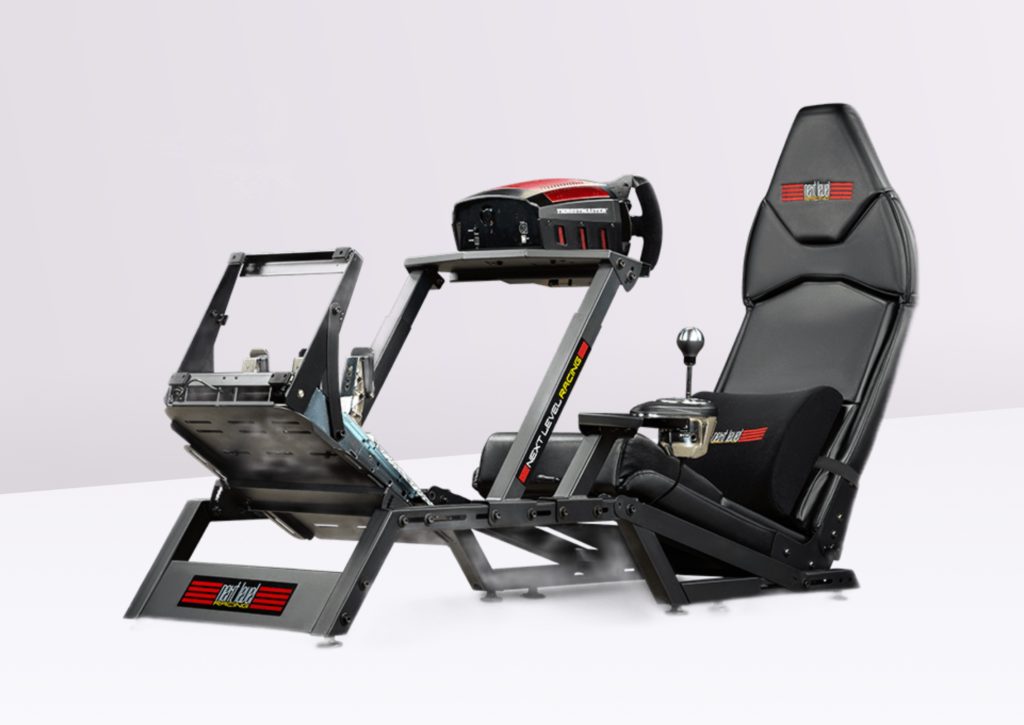
Advantages :
- Cockpit with 2 driving positions (F1 and GT)
- Solid, high-end structure
- Very good value for money
Disadvantages :
- Difficult to assemble the first time
Next Level Racing is a brand well known in the sim-racing world for its cockpits, which are both of very high quality and sold at very competitive prices. In this list, I’ve chosen the F-GT, which is an excellent mid-range chassis that can be configured for two leading disciplines, F1 and GT.
So, the F-GT is an all-steel chassis with a very robust structure. This is to be expected, given Next Level Racing’s many years of service in sim-racing. The design is rather sober, with the color black dominating most of the chassis. You’ve only got logos here and there with red accents. I like it, and if you’re looking for a handsome, all-purpose cockpit, you’ll like the F-GT too.
As I’ve just mentioned, this chassis is made entirely of steel, giving it both high stability and weight. The F-GT is not light, weighing in at 45 kg, which could be a problem when transporting it. Next Level Racing has thought of everything by including castors in the F-GT ‘s box, making it easy to move around. Except that these introduce a little instability, and I’d advise you to mount it in one place and use the pads so that the F-GT doesn’t move around. Speaking of mounting, you should know that this operation is rather arduous and will take some time to complete. But at least the manual is very detailed.
As for compatibility with sim-racing peripherals, F-GT supports almost all those available on the market, from cranksets and bases to shifters. As far as I’m concerned, this is a big plus for F-GT.
Let’s talk about comfort. Well, this Next Level Racing cockpit has a very comfortable seat, which can be adjusted as you wish. You’ve got a slide at the bottom to move it forward or back, a little cushion for lumbar support, and two driving positions. Indeed, the F-GT, as its name suggests, lets you race F1 and GT cars, making it very versatile. Switching from one position to another is very easy, leaving you more time for sim-racing than manipulating the cockpit.
Let’s turn now to the bill. A chassis like the F-GT isn’t cheap, as you can probably imagine. Currently, the F-GT can be exchanged for the princely sum of €549, which isn’t outrageously expensive if you ask me. I know of much more expensive cockpits that don’t offer even half the functionality of the F-GT. On the market today, it’s hard to beat them in my opinion, especially in this price bracket. You can find less expensive chassis, but they’re all geared to a specific discipline (F1 or GT). So, for me, this is an excellent investment for sim-racing enthusiasts. And if you’re not quite convinced, you can read my full review of Next Level Racing’s F-GT cockpit here.
Next Level Racing GTTrack
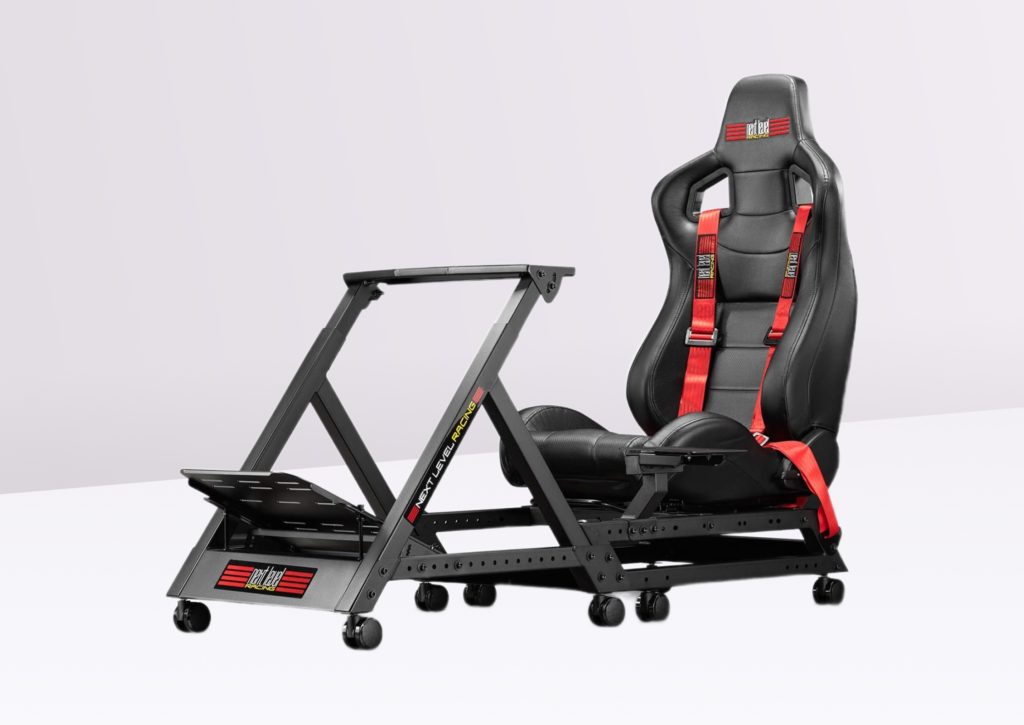
Advantages :
- Solid, durable structure
- Bracket for gearshift and handbrake
- Excellent build quality
Disadvantages :
- Seat not very comfortable after a while
- Fairly high weight
I’m back with Next Level Racing, but this time with a much better chassis, the GTTrack. It’s true that I like Next Level Racing’s products, but my opinion is in no way biased by that.
So, the GTTrack. I’ll start with its design. The GTTrack looks a bit like the F-GT I’ve just introduced, but more beautiful as far as I’m concerned. I know, the design of any product is subjective, but the GTTrack is beautiful all the same.
Where the difference between the GTTrack and the F-GT begins is in the materials used. The GTTrack uses steel and carbon, laser-cut to give it greater strength than its little brother. The entire chassis is perforated, allowing you to adapt the location of the various components to your liking, and that’s a big plus for this cockpit.
Continuing on the point of differences, the GTTrack has a bracket that can accommodate both a shifter and a brake, provided you have suitable peripherals. Admittedly, this limits the choice a little, but it’s always a plus over the competition. And unlike the F-GT, the GTTrack is not a hybrid cockpit with 2 different driving positions. In fact, this chassis is aimed primarily at sim-racers who enjoy GT racing, and it’s perfect for that.
As for compatibility with sim-racing peripherals, the GTTrack supports all products from brands such as Logitech, Thrustmaster, Fanatec and others. What’s more, this cockpit will work perfectly with any platform, whether PC or console.
Let’s turn now to the GTTrack seat. To begin with, it’s a very handsome seat, a direct reproduction of a racing bucket seat. Wanting to push immersion and realism to the max, Next Level Racing put a harness on the seat that attaches directly to the cockpit structure. It’s just gorgeous, especially with the red belts. As for comfort, the seat can be adjusted in several planes, which should accommodate just about any sim-racer. However, I have to admit that it’s not very comfortable, especially when you’re using the GTTrack for many hours. At first, you won’t feel a thing, but after a while, you’ll be sore in several places. In a way, the GTTrack is like the seat of a Super Car: beautiful, comfortable, but only over short distances.
I’ll pass quickly over the weight of the beast. At 48 kg on the scales, the GTTrack is pretty heavy. But hey, you’ve got castors that attach to the bottom of the chassis for easy movement. It’s handy, but introduces a slight instability. If you want a tip, the GTTrack is a cockpit that goes into one place and stays there for good.
Let me finish with the price. A top-of-the-range cockpit like the GTTrack has to be paid for, and quite expensively. It retails at €899, both on the manufacturer’s website and in online stores. It’s expensive, of course, but it’s also a top-quality, robust and well-finished product. If you’re a fan of GT racing or can afford the GTTrack, I highly recommend this cockpit.
Playseat F1
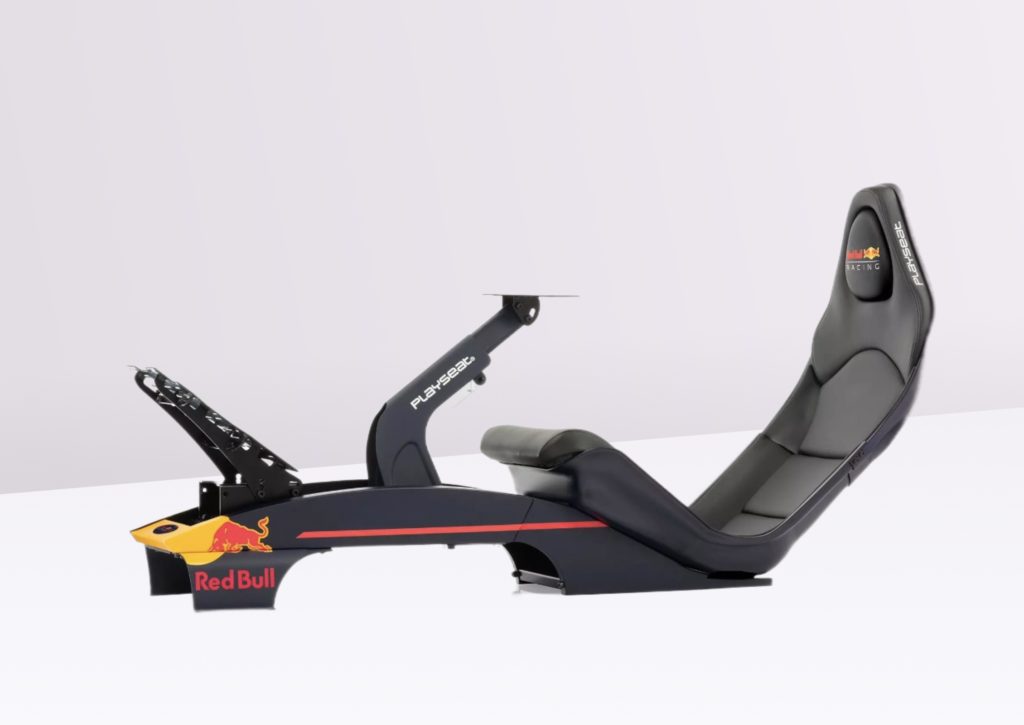
Advantages :
- Cockpit specially designed for F1
- Excellent build quality
- Premium materials
- Total immersion
Disadvantages :
- Premium prices
- For F1 use only
It’s no mean feat Playseat more or less dominates the sim-racing cockpit market, especially when you see one of its high-end chassis, the F1. It has to be said, this cockpit is among the best currently available on the market.
Let’s start with its design. As its name suggests, the Playseat F1 is a chassis aimed exclusively at sim-racers looking to race F1 cars. Its design is unique, largely inspired by the driving position of single-seaters. The chassis structure is made up of 3 parts, plus the seat, which are bolted together. The basic color of the cockpit is red, except for the seat leather, which is black. However, limited editions are available in other colors, such as all-black.
In terms of compatibility, the Playseat F1 supports all sim-racing peripherals, especially high-end ones such as Fanatec Direct Drive bases. In fact, this cockpit was developed with this in mind, and its structure gives it unprecedented stability. It’s simple: nothing moves when you’re sim-racing.
The driving position is virtually on the ground, with your legs higher than your pelvis, just as in an F1 car. The base/steering wheel support is between your legs, which can be uncomfortable for some sim-racers. Personally, I’ve got used to it after a few sim-racing sessions, and it’s adjustable as you go, as is the pedal support.
As for sturdiness, you can drive in gruff mode with the most powerful DD bases, and the Playseat F1 won’t wobble a bit. It’s ultra-strong and ultra-stable, whatever you use it for. And since the entire structure is made of metal, you’ll feel the vibrations of the crankset and chainstay all over your body, which is truly superb.
Finally, the price. The Playseat F1 is a premium F1 chassis, and so is its price. Priced at €999 for the red version, it’s an expensive product that will find takers among fans of motorsport’s flagship discipline. Once again, if this summary has made your mouth water, you can read my full review of the Playseat F1 right here.
The Playseat Challenge
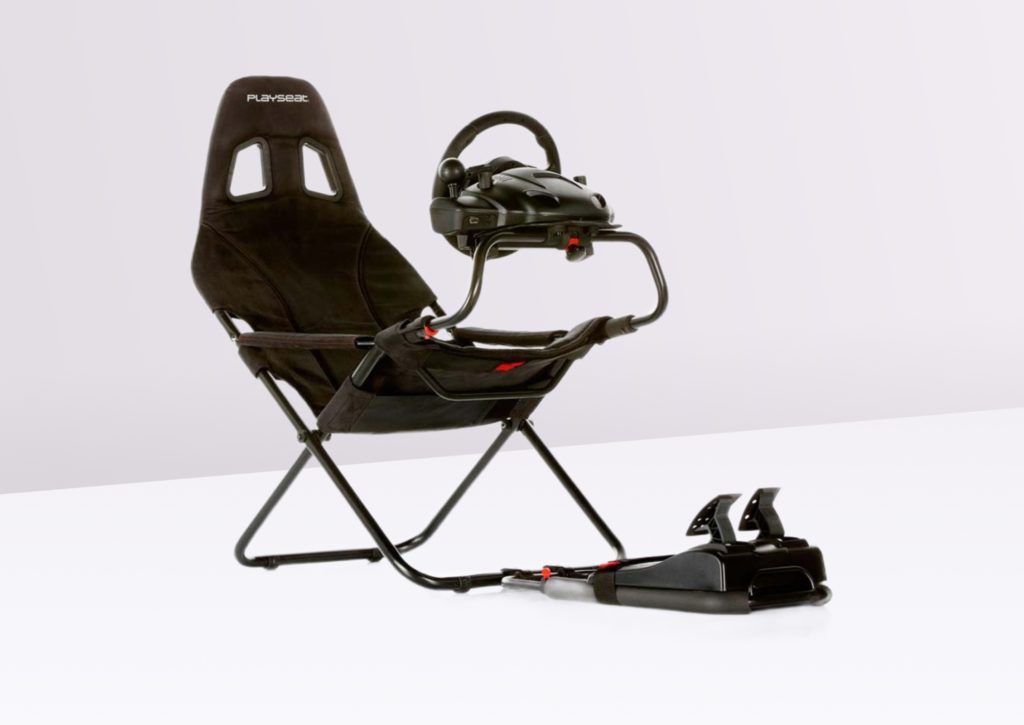
Advantages :
- Easy to store
- Very attractive price for beginners
- Compatible with virtually all steering wheels and pedals
Disadvantages :
- Chassis not very stable
- Cockpit not recommended for Direct Drive bases
Let’s finish with a rather low-end chassis that is perfect for beginner sim-racers or Sunday enthusiasts, the Playseat Challenge. Before going any further, you’ll be aware that Playseat is a major player in the sim-racing industry, and can be considered the world’s best chassis manufacturer, just as Fanatec is for everything peripheral.
However, to dominate such a market, you need to offer several product ranges, and that’s why the Playseat Challenge exists. This cockpit is an entry-level product, very basic but still practical and efficient in what it does. The structure is tubular, very much inspired by folding chairs. In fact, this is the selling point of the Playseat Challenge , as it’s very easy to unfold and fold for storage.
The Playseat Challenge is a rather light cockpit, weighing in at 8.5 kg, but is nonetheless sturdy and can support up to 122 kg. As far as I’m concerned, that’s not bad at all. As for the backrest, or seat if you like, you have a fabric just like on a folding chair. The fabric is top-quality Alcantara, with no foam reinforcement. Already, you can see that the Playseat Challenge is not designed for long sim-racing sessions, as you’ll almost certainly feel some discomfort if you use it long enough.
Now to the heart of the matter: compatibility with sim-racing peripherals. So, the Playseat Challenge supports virtually all products from Fanatec, Thrustmaster and Logitech, leaving you with a wide range of peripherals. However, you should bear in mind that some pedalboards (the very basic ones) don’t provide for cockpit mounting, and you may well come across a bone in these cases.
As for in-game stability, well, it’s not bad, as long as you don’t ask too much of the chassis. Don’t forget that the Playseat Challenge is an entry-level cockpit, which will work perfectly well with configurations with belt- or gear-driven bases. Don’t put an 8 NmCSL DD on this cockpit, as you’ll be introducing a lot of instability.
Even if the Playseat Challenge has a few shortcomings, notably instability, the price quickly erases all that. This cockpit can be found for between €210 and €230 depending on the retailer, which is frankly not expensive at all. If you pair it with a Logitech G920/G29, you’ll have an excellent setup for less than €500. If this sample review has made your mouth water, you can read my full review of the Playseat Challenge right here.
Which one to choose?
- Budget. It’s important to define a not-to-exceed budget for a cockpit, which also correlates with your setup. You’re not going to buy a €1,000 cockpit if you have entry-level peripherals.
- Discipline. We’ve seen both generalist and specialist cockpits. So, if you want to do F1 exclusively, you need a cockpit specifically for that.
- Stability. Some chassis are not designed for use with DD bases. So if you have such a base, you need to look for a cockpit that supports it, especially to ensure stability.
- Compatibility. Not all cockpits are compatible with all sim-racing peripherals available on the market, so you’ll need to look for a product that is compatible with your setup.

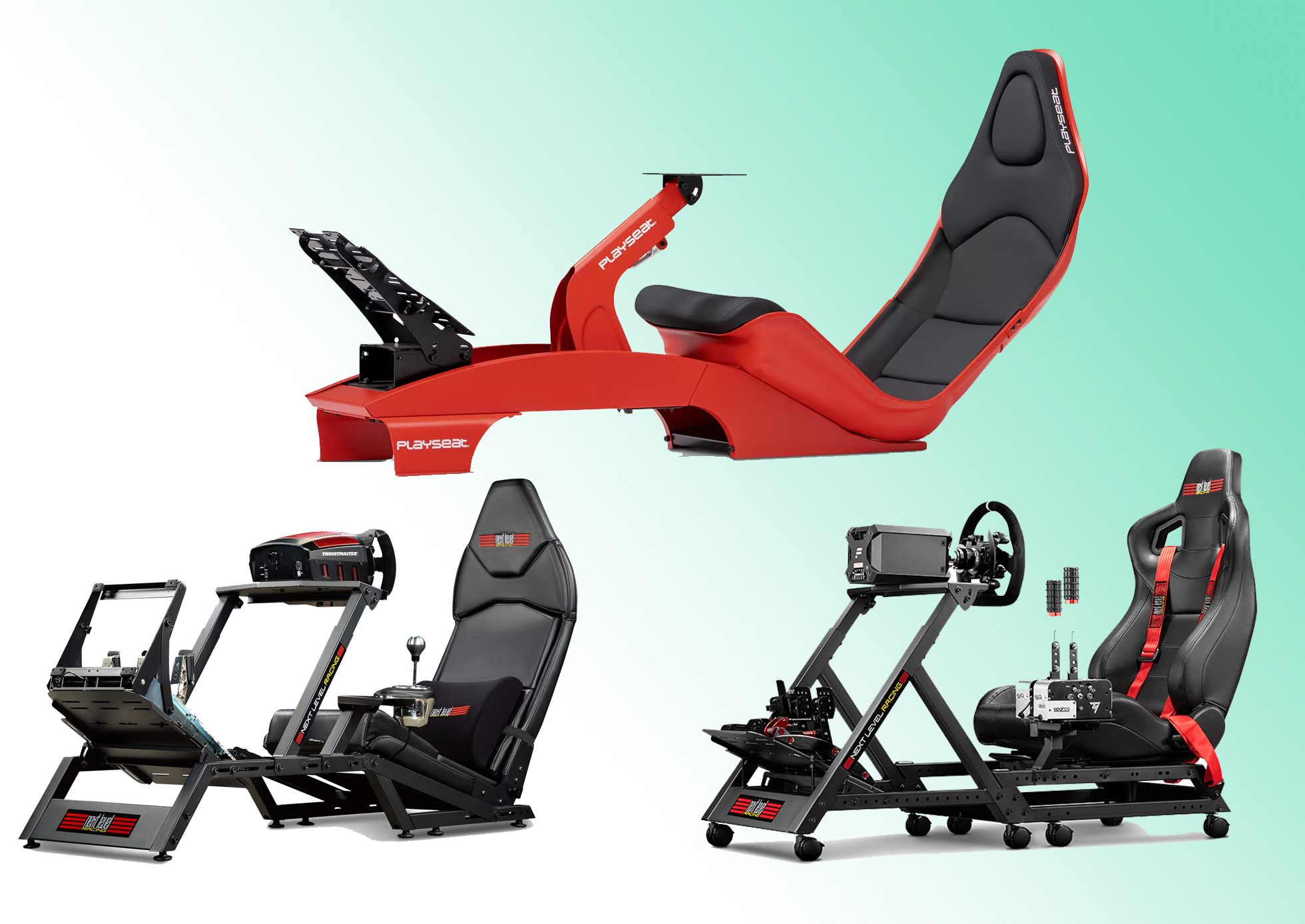
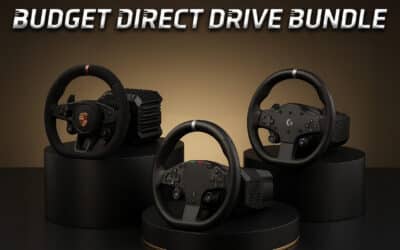
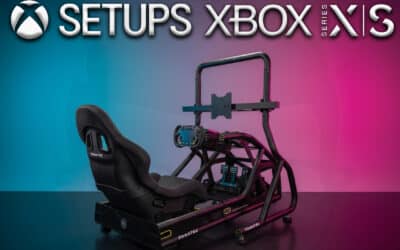



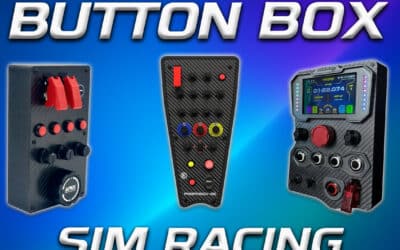
0 Comments